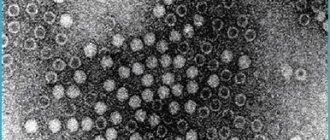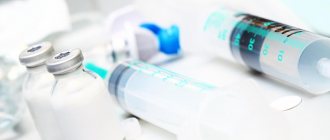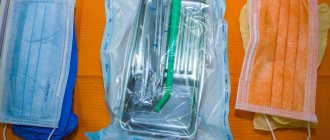On what day does ovulation occur?
The menstrual cycle lasts on average 28–32 days. Without special research, it is impossible to accurately answer the question of when a girl ovulates. Ovulation usually occurs in the middle of the menstrual cycle (days 12–15). For a more accurate calculation, it is necessary to plot your basal temperature over several months.
Another way to try to find out when ovulation occurs is with a calendar. To find out when ovulation occurs after menstruation, you need to count 14 days from the beginning of your last menstruation on a calendar. With an ideal 28-day cycle, there will also be 14 days left until the next period, that is, ovulation will occur exactly in the middle of the cycle. But does ovulation always occur on the 14th day?
Doctors say that the ideal classic version is not so common. For most women, ovulation occurs between the 11th and 21st days of the cycle, counting from the first day of the last menstrual period. There are 12 to 16 days left until the next menstruation. How long it takes for ovulation to occur depends on the hormonal background and the emotional and physical state of the woman, and in different cycles ovulation can occur on different days. Doctors also know of cases when during one menstrual cycle a woman had two ovulations at once.
What is ovulation
Every woman ovulates once a month (from the Latin ovulum - egg, ovulatio - hatching) - During ovulation, a mature egg leaves the ruptured follicle into the fallopian tube, in which the long-awaited (or unexpected) fertilization occurs.
And now the details. Why do you need to determine ovulation? Ovulation is determined in 2 cases:
- If you need to maximize the likelihood of conception. In this case, knowledge of the time of ovulation (real, not calculated for the average woman). If you are going to get pregnant and you do not have and have not had any problems. The ideal option for you is a urine ovulation test (see below)
- If you tried to get pregnant but didn't succeed. Along with the study of the husband's sperm and tubal patency, ovulation testing is included in the standard protocol for examining infertile couples around the world, according to WHO standards. In this case, it is better to start with a blood test for progesterone and/or Ultrasound monitoring.
How to find out if ovulation has occurred?
The only 100% reliable fact that pregnancy has occurred is pregnancy. All other diagnostic methods are less reliable.
How to determine the most optimal time for conception? The egg lives no more than a day. For fertilization, she needs time - 18-20 hours. Total: if within 10 hours the egg does not meet sperm and is not fertilized, it dies. Sperm live in a woman’s genital tract for up to 5 days (in young married couples with ideal health). Conclusion: The ideal time to have sex is during and before ovulation, not after.
Does it make sense to determine basal (rectal) temperature?
Studying basal temperature is the cheapest and most accessible method of studying ovulation. This is where the positive properties are limited: the method is unreliable, unstable and biased. The rate of misinterpretation (even by a doctor) reaches 50%. A lot for a diagnostic test on which a long-term strategy is based. The mechanism for changing basal temperature is as follows: after ovulation, the corpus luteum produces progesterone, which affects some hidden mechanisms in the hypothalamus, which, in turn, increases the overall body temperature by about ½ degree (0.4 minimum). The most annoying thing is that a registered increase in temperature means that ovulation occurred at least yesterday, and sexual activity should have occurred 2 days ago. That. For planning conception, this method is worse than all others. As for the quality of the corpus luteum, measuring blood progesterone is objective and reliable, compared to measuring the length and amplitude of the temperature rise.
Does it make sense to study ovulation using ultrasound (ultrasound?) On what days of the cycle is it best to do this?
If you have a regular menstrual cycle (on average 25-35 days from the first day of one menstruation to the first day of the next), then ovulation will be confirmed in 9 cases out of 10. It is economically feasible to be examined in absentia (blood test for progesterone, or urinary test for ovulation ). If you have doubts about your hormonal health, it is better to start ultrasound monitoring right away. The dominant follicle begins to grow on the 7th day of the cycle. As a rule, it reaches maturity (diameter 16-20 mm) on the 14-15th day. Previously, it was customary to determine the growth rate of the follicle; there were corresponding growth rate standards. Today, in most cases this is not required.
The main goal of Ultrasound Ovulation Monitoring (USMO) is to “pinch the follicle into a fork” between two observations: on the first examination - a mature follicle, on the second - the corpus luteum, and the fluid behind the uterus (pouring out of the follicle and flowing down, i.e. behind the uterus ). Sometimes it is necessary to examine the corpus luteum in the ovary; it can be seen 2-4 days after ovulation, preferably 5-10 days. A normal appearance of the corpus luteum (ideally examined with color Doppler to clarify blood flow) indicates normal ovulation. Ultrasound monitoring is an observation not only of the follicle, but also of the endometrium, its thickness and structure. The endometrium (from the Greek Endo - inside and metra - uterus) is the mucous membrane lining the uterine cavity, an extremely important element. The endometrium must “prepare” to capture the embryo. This preparation takes ¾ of the menstrual cycle
Why do you need to test your blood for progesterone?
Progesterone (lat. pro gestatio - for pregnancy) is a hormone necessary to maintain pregnancy. Progesterone is the main hormone produced by the corpus luteum of the ovary. The cells lining the follicle quickly (within 1 day) degenerate into corpus luteum cells. The corpus luteum begins to produce the hormone immediately after ovulation, progesterone reaches its peak within 7 days. If a woman does not become pregnant, progesterone decreases. Due to the drop in progesterone concentration, menstruation occurs. A study of the peak of progesterone in the middle of the luteal phase (14 days divided in half, we get 7 days after ovulation, or 7 days before menstruation) tells us about a normally functioning corpus luteum. A normal corpus luteum means normal ovulation. Normal ovulation of 2 menstrual cycles in a row indicates the normal functioning of a woman’s entire endocrine system, and is the basis for refusing further hormone research.
Does it make sense to study ovulation with a urinary LH test?
LH is a luteinizing hormone produced by the pituitary gland. Its main function is the initiation of ovulation, which leads to a change in follicle cells with the formation of the corpus luteum (Corpusluteum - yellow body, lat). The yellow color is a sign of a large number of steroid hormones, remember the egg yolk - the mechanism is the same. The urine test for ovulation, also known as the LH test (commercial preparations Eviplan, Frautest), is for some reason not very popular among Russian patients. But in vain. It is the increase in LH concentration that makes it possible to predict ovulation in advance, and not to be a witness to the current (happened) process. The mechanism of ovulation is very complex. This is a whole cascade of inflammatory changes in the follicle, which takes time. Something around 40-42 hours. Ovulation is triggered by the onset of the LH surge. Thus, knowing the time of the onset of the peak, it is possible to predict approximately the time of the onset of ovulation. Maximizing the likelihood of conception is simple: you need to “live” between the LH peak and ovulation, which can be observed on ultrasound. The opposite is that protection from unwanted pregnancy using this method is not reliable and is not recommended. However, ovulation tests are often considered unreliable and often produce false negative (i.e. erroneous) results. The reasons for this are as follows and should be avoided:
- poor quality test. The manufacturer, as a rule, makes a high-quality test, which can easily be spoiled by storing it in a warm place (humid, sunny, etc.). Be careful, follow all storage rules, a complex chemical reaction occurs in a seemingly simple strip. Don’t forget about control: there should be one control strip in any case; if there is none, the place of the “diagnostic test” is in the trash can.
- wrong time of day for research. Our habit fails us all: urine (blood) must be examined in the morning. That's how it is. Indeed, the rise in LH most often begins at 4-5 am. If you test your blood for LH (it’s expensive, and it’s a shame to inject a vein every day), then the morning is what you need. Yes, only LH enters the urine several hours later. We recommend taking an ovulation test between 16-21 hours.
- incorrect cycle time. Either we have to wait many days for ovulation, or we “slept through it.” Ovulation usually occurs 14 days BEFORE menstruation. It is calculated like this:
Step 1 Calculate the average length of the menstrual cycle over the last 3 months.
Step 2. Using the calendar, we calculate the day when the next menstruation should arrive. Step 3. Count back 14 days. 14 days is the duration of the luteal phase in humans. We get the estimated time of ovulation. Step 4. Count back another 3 days (with a margin of 4). We have received a date from which we must be guaranteed to detect ovulation by the LH peak. EVERYTHING about LH. What is the most reliable method for studying ovulation?
The only 100% reliable evidence of ovulation occurring is clinical pregnancy. Everything else is our (doctors’) indirect ideas about it. Here is an approximate rating of ovulation diagnostic methods with our doctors’ subjective ideas about their reliability:
| Clinical pregnancy | 100% |
| Monitoring ovulation during surgery | 98% |
| Ultrasound confirmation | 95% |
| Blood test for progesterone in the mid-luteal phase | 95-98% |
| Urinary LH test | 75% |
| Basal temperature study | 50-60% |
| Research of so-called tests functional diagnostics | 30-60% |
What is the most convenient method of ovulation research?
Another question immediately arises: is it convenient for the doctor or for the patient? This depends on the distance of the patient from the clinic. If it is possible to test your blood for progesterone in a good laboratory, do so. If there is no laboratory nearby, the best test method is a urinary LH test. If you have doubts about your hormonal health (irregular cycle), the best option is ultrasound ovulation monitoring.
How often does ovulation occur normally?
Every month. The ovaries can allow themselves to “rest” for 1-2 cycles a year. As a rule, during times of stress (heat, cold, exams, moving), nature turns on security mode. There is no peak of hormones, ovulation is canceled. A woman’s 9-10 cycles a year are “ovulatory”. Closer to 40 years of age and, especially older, ovulation occurs somewhat less frequently.
When should you think about problems with ovulation?
If you have observed ovulation for 2 cycles in a row, you have no problems with hormonal health. If there was ovulation in the 1st cycle, not in the other, we observe it in the 3rd cycle, if it is there, everything is fine. Irregular menstrual cycles (cycles less than 25 or more than 35) are associated with ovulation pathology.
When should you stimulate ovulation?
In cases where it is absent (anovulation) or rare (oligoovulation). Before stimulation, the doctor must find out its reasons. Various endocrine disorders can catch up with you during pregnancy, causing miscarriage. Tumors of endocrine health organs are also not added. Diagnosis of endocrine problems will be discussed in separate sections.
What is corpus luteum deficiency?
This is a lack of production of corpus luteum hormones. Diagnosis of this condition has traditionally been based on measuring basal temperature. Today, a blood test for progesterone is a more reliable diagnostic method. Ultrasound can also provide additional information. Often, corpus luteum deficiency is not an independent disease. It is usually a sign of “poor” ovulation.
Conclusion.
Diagnosing ovulation and ovulation problems is not a difficult task for an experienced doctor. This material will help you speak the same language with your doctor and make your communication more productive and achieve the desired result with minimal losses - the birth of the desired baby. We are always happy to help!
How many days does ovulation take place?
Ovulation is a short stage of the menstrual cycle, lasting only 48 hours. During this period of time, the egg, ready for fertilization, leaves the ovary, descends the fallopian tube and moves towards the uterus, where it will await fertilization. If fertilization occurs, the egg will attach to the wall of the uterus.
Favorable days for pregnancy are two to three days before ovulation and one day after, and on the day of ovulation the chances of conception are especially high. Therefore, to calculate favorable days, it is very important to keep an ovulation calendar and imagine how long ovulation occurs.
A mature egg is viable for only 24 hours, so within a day after ovulation the so-called safe days begin. The likelihood of fertilization after ovulation is extremely low.
Frequency of sexual intercourse
Calculating ovulation can be erroneous because menstruation is influenced by many factors and your fertile period may occur earlier or later than expected.
The success of conception increases mainly 2 days before ovulation. But the maximum probability of pregnancy exists specifically on the day it occurs. The egg lives for 1 day, so conception after the end of ovulation is relatively unlikely. But sperm are viable longer - up to 5 days. after the act.
Therefore, regular sex life is important to increase your chances of getting pregnant. Sexual intercourse every 2 - 3 days allows you to capture the entire fertile period.
MAKE AN APPOINTMENT
[contact-form-7 id=”296" title=”Untitled”]
Abortion and contraception clinic in St. Petersburg - department of the medical gynecological association "Diana"
Make an appointment, tests or ultrasound via the contact form or by calling +8 (812) 62-962-77. We work seven days a week from 09:00 to 21:00.
We are located in the Krasnogvardeisky district, next to the Novocherkasskaya, Ploshchad Alexander Nevsky and Ladozhskaya metro stations.
The cost of a medical abortion in our clinic is 3,300 rubles. The price includes all pills, an examination by a gynecologist and an ultrasound to determine the timing of pregnancy.
How do you know if ovulation is happening?
Many women think about how to find out when ovulation occurs, because correctly determining this period will allow you to conceive a child faster. It is convenient to use the following methods at home without visiting a doctor.
- If you have regular periods, you can use the calendar method to calculate ovulation. According to it, ovulation should occur approximately in the middle of the cycle, but how can you understand whether ovulation occurred on the days you planned? Connect additional methods for determining ovulation!
- Measuring your basal temperature will also help determine that ovulation has occurred. An increase in temperature in the rectum indicates the release of an egg ready for fertilization. You can find out at what temperature ovulation occurs by charting your basal temperature every month. Typically, basal temperature during ovulation differs from pre-ovulatory values by approximately half a degree.
- An ovulation test is another way to determine whether ovulation is occurring. Ovulation strip tests are similar to pregnancy tests, only they show two strips not in case of successful fertilization, but when the egg is released from the ovary.
How follicles mature: normal process and hormonal stimulation
Under the influence of follicle-stimulating hormone, follicles begin to mature in the ovaries. Follicles are small “watery” sacs that contain immature eggs.
In one menstrual cycle, several follicles usually begin to mature at once. However, by the middle of the cycle, one dominant follicle clearly stands out. In rare cases, several of these bubbles can fully mature. The maturation of follicles is accompanied by a slow increase in the concentration of the main female hormone - estrogen - in a woman’s body.
In some cases, for example, with IVF (in vitro fertilization), there is a need to obtain several mature follicles with eggs. This is necessary in order to increase the chances of successful conception in vitro. Excess eggs are frozen in liquid nitrogen and used for new attempts, without torturing the woman with unpleasant and painful punctures.
An increase in the number of normal follicles can be achieved by hormonal stimulation, which affects ovulation. Those. The woman is given a course of hormones that stimulate the maturation of follicles and eggs. If stimulation was not followed by puncture, i.e. conception occurred in a natural cycle, multiple pregnancies are possible. In this case, twins and even triplets will be born in those families where there have never been such cases.
Stimulation of ovulation is required not only for IVF. This treatment is prescribed to women in whose body the level of hormones is lower than necessary for normal ovulation of even one egg. It is important to carry out hormone therapy only with an experienced doctor, since incorrect calculation of the dose of administered hormones will lead to hyperstimulation, which prevents conception. This condition causes severe side effects - vomiting, headaches, tumor growth, weight gain, etc. Thus, other problems are added to infertility.
When does fertilization occur after ovulation?
After ovulation, the sperm has about a day to meet the egg and fertilize it.
If conception does not occur, the egg is destroyed in the fallopian tube within 24 hours, and after about 14 days the woman begins menstruation again - this is the release of an unfertilized egg.
If the meeting of the sperm and the egg was successful, the fertilized zygote descends into the uterus within 6–12 days, after which it is fixed there and pregnancy occurs. With the onset of pregnancy, the ovaries stop producing new eggs, so there is no fear that ovulation occurs during pregnancy - re-fertilization is impossible.
Conditions for successful conception
So, from all of the above it follows that the following conditions are needed for conception:
- FSH level sufficient to stimulate follicles;
- full ovulation, characterized by the release of a mature egg;
- free fallopian tubes through which germ cells move;
- active sperm capable of fertilizing an egg.
An important condition: if there are tumors, adhesions or other obstacles in the tubes that prevent the advancement of the egg or sperm, or there are problems in the uterus with the inner layer of the mucous membrane - the endometrium, which prevent the fertilized egg from implanting for further development, pregnancy will not take place. Therefore, in case of infertility, a complex of conditions is studied.
In addition to hormone tests, the following are prescribed:
- folliculometry - ultrasound, which allows you to determine the condition of the follicles;
- Ultrasound of the uterus and tubes - showing the general condition of the internal female genital organs;
- spermogram - analysis of male germ cells, revealing the concentration, viability and activity of sperm.
When to see a doctor?
In fact, the line between just pain during ovulation and pain that is a good reason to see a doctor is very, very blurry. If only because, as has been said more than once, everything is very individual for everyone, which is why each case requires separate consideration. However, there are a couple of symptoms that should alert a girl.
Firstly, these pains are regular. They always occur at the same time and last quite a long time. Secondly, they are so strong that they interfere with your daily activities. Thirdly, in addition to pain, you experience weakness during ovulation, dizziness, nausea, and these symptoms do not go away for more than a day. That's when you need to make an appointment with a doctor.
To avoid worries, remember two simple rules. First, listen to yourself, observe and try to record the norm in order to distinguish it from disturbing symptoms. Secondly, you need to visit a gynecologist with subsequent smear tests and ultrasound of the genitals and abdominal cavity at least once a year. Then you will know exactly what your personal signs of ovulation are and when to expect it.
And if not…
Lack of ovulation (anovulation) may be caused by pathological changes at the level of the brain, adrenal glands, thyroid gland, endocrine disorders of the reproductive system: polycystic ovary syndrome of central, adrenal and ovarian origin, hyperandrogenism, hypothalamic-pituitary dysfunction, hyperprolactinemia, premature ovarian failure syndrome, resistant ovarian syndrome. The process of follicle maturation and egg release can be disrupted by:
- stress,
- starvation,
- chronic lack of sleep,
- mental and physical overload,
- past infectious diseases of the nasopharynx,
- radioactive exposure,
- taking certain medications,
- chronic liver and kidney failure,
- diabetes.
Ovulation does not directly depend on nutrition, but after consultation, the doctor may recommend phytoestrogens, omega-3, vitamin therapy, as well as giving up smoking and other bad habits.
Lack of ovulation, or anovulation
Ovulation and pregnancy are closely related, so the absence of the former leads to the inability to have a child. However, even in a healthy woman, the egg does not mature in every cycle. Two to three cycles per year with anovulation are normal. With age, the number of such periods increases.
But if there are four or more anovulations in a year, consult a doctor. As in cases when a woman has severe pain in the lower abdomen during ovulation, this may be a symptom of endocrine or gynecological diseases.
Lack of ovulation is observed when:
- pregnancy;
- menopause;
- hormonal imbalance;
- taking certain medications.
If you want to have a child, ovulation is stimulated with hormonal drugs. But don't self-medicate. Stimulation should be carried out under the supervision of an experienced doctor: he will examine you, conduct the necessary tests and prescribe medications that suit you.
Types of ovulation:
- timely;
- premature ovulation;
- late.
Causes of premature ovulation
Premature is the release of an egg not in the middle of the menstrual cycle, but earlier. It can happen for various reasons:
- intense sexual intercourse;
- physical activity (weight lifting, gym training);
- stress;
- diet;
- illness;
- hormonal imbalance.
If you have an unstable cycle, it is difficult to talk about premature ovulation, since the hormonal system does not work normally.
Please note: even stress can cause premature ovulation. Due to nervous tension, attempts to lose weight, diseases that we do not always even pay attention to, premature ovulation can occur quite often.
Causes of late ovulation
Sometimes, due to hormonal imbalances, late ovulation may occur. If in the middle of the cycle your stomach does not hurt and there are suspicions that you have late ovulation, undergo folliculometry - tracking ovulation using ultrasound.









